Best pedalboards 2025: top choice 'boards for guitarists
Organise your guitar effects pedal collection with one of the best pedalboards available from Pedaltrain, D'Addario, Gator and more

Pretty much every guitarist will come to the point in their playing career when they need one of the best pedalboards. Whether you're a strictly at-home player with a handful of stompboxes or you're going on tour with a 'board that resembles a spaceship, organizing your pedals properly is a great way to help you concentrate more on your playing.
I've been playing live for twenty years so trust me, there's nothing more annoying for your sound engineer (or your bandmates) than turning up with individual stompboxes, wasting precious time setting them all up and down when you could be soundchecking. Similarly, if you're practicing at home you could be much more efficient with your pedals ready to go on your 'board. It's a right of passage for guitarists setting up your first pedalboard, and it can be one of the more exciting and fun accessories you purchase.
There are loads of options available at the moment, so to make things easier for you to choose, I've narrowed down a selection of my favourites for you. It includes at-home 'boards, compact options, and full-grade touring beasts so no matter what your needs you'll be well covered here. If you're new to pedalboards I've also put together a series of FAQs nearer the bottom of the article, using my years of playing experience to guide you to the best buying decision.
Our top picks

The go-to brand when it comes to pedalboards, the Pedaltrain Classic JR is the definition of a modern classic. With various sizes available plus plenty of accessories, it's a great option for guitarists of all kinds and is excellent value for money.

Pedalboards can get expensive quickly, but you can still get a solid 'board on a budget. I've owned a Harley Benton SpaceShip for the last few years, taking it on tour and it's an incredibly capable pedalboard for relatively little money.

If you've only got a handful of pedals or you want a nice travel-sized rig, then I'd go for the Pedaltrain Nano Plus. It'll fit a single line of pedals and although it requires a slim or top-mounted power supply, it's the sacrifice you make for portability.
Best overall
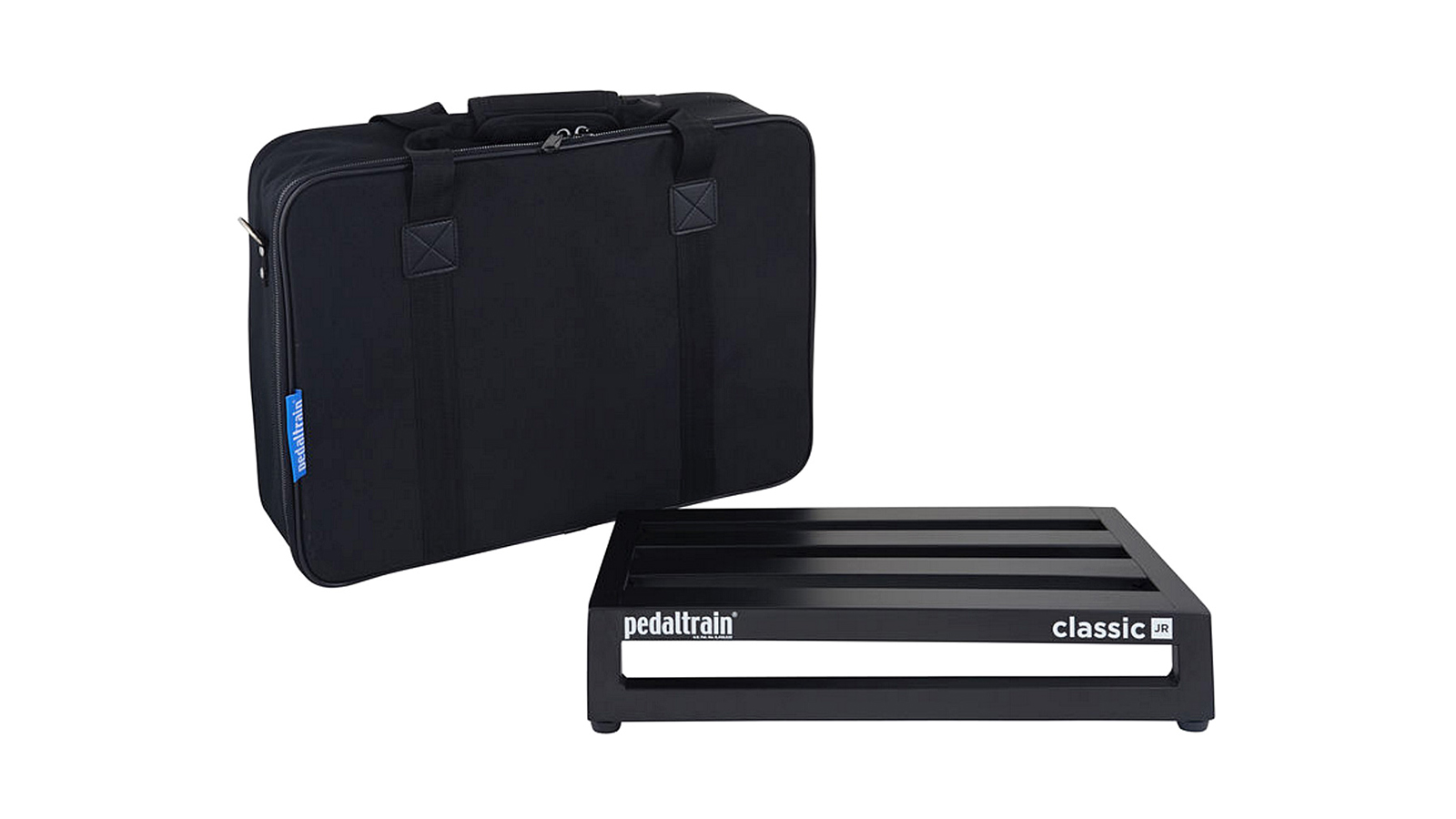


1. Pedaltrain Classic JR
Our expert review:
Specifications
Reasons to buy
Reasons to avoid
The de-facto standard for pedalboards, the Pedaltrain series has more different options and models than you can shake a stick at. Pedaltrain has developed an excellent reputation for durability and although they're not the cheapest out there, you're paying for quality here.
The Classic series has a number of different sizes, with risers available if you need to improve the ergonomics of pedals on higher rails. The JR is a nice size for a grab-and-go 'board, or something that you need to take on public transport. It'll fit up to ten standard stompbox-sized pedals, although this could be potentially less if you have anything bigger.
The regular Pedaltrains have options for their brand of pedalboard power supply, but most brands will fit comfortably underneath, as will cable runs and I/O connectors. There's a reason Pedaltrains are the most popular pedalboards you'll see on the gigging circuit, and that's their combination of usability and durability.
Best budget


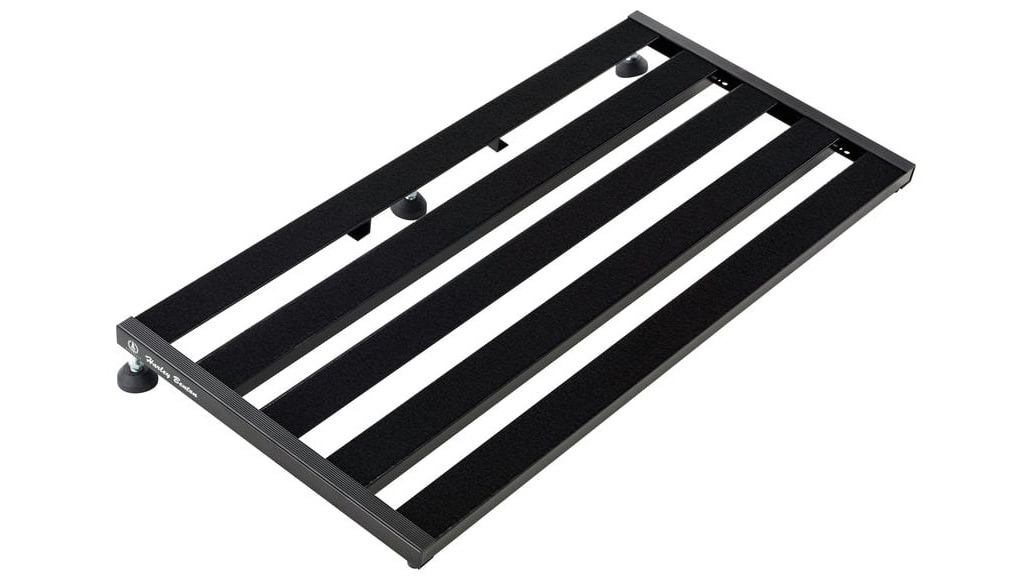

2. Harley Benton SpaceShip 40
Our expert review:
Specifications
Reasons to buy
Reasons to avoid
Proving that not all the options need to break the bank, Thomann's own brand Harley Benton line has some nice Pedaltrain alternatives, with a variety of sizes under the Spaceship moniker.
They're competitively priced and come with a soft case as standard. You can upgrade to a hard case too if you need something more durable. As a neat feature, they boast adjustable feet at the rear so you can tilt the board higher or lower to access the back rows.
We found them to be very durable over the course of a few years, responding well even with plenty of roughhousing on tour. The range of sizes will have pretty much any guitarist covered, and the huge 80cm option is great for those with massive pedal collections.
Best compact

3. Pedaltrain Nano Plus
Our expert review:
Specifications
Reasons to buy
Reasons to avoid
The Pedaltrain Nano Plus is a compact, soft-cased board that accommodates only a single row of pedals, but it’s a great option if you need a stripped-down travel rig or you just have a handful of pedals you want to keep neat and tidy.
Pedaltrain's durability needs no introduction, so you'll be getting a solid product with one of these. The inclusion of all the accessories you need is a nice add-on, and we found the hook and loop used on these 'boards is super durable.
Because of the tight space under the board, you'll have to raise the rear feet by DIY means, top mount your pedalboard power supply, or buy a specific compact PSU. Luckily Pedaltrain, Strymon, and other brands offer super slim power supplies, although they can be pricey.
Best for versatility



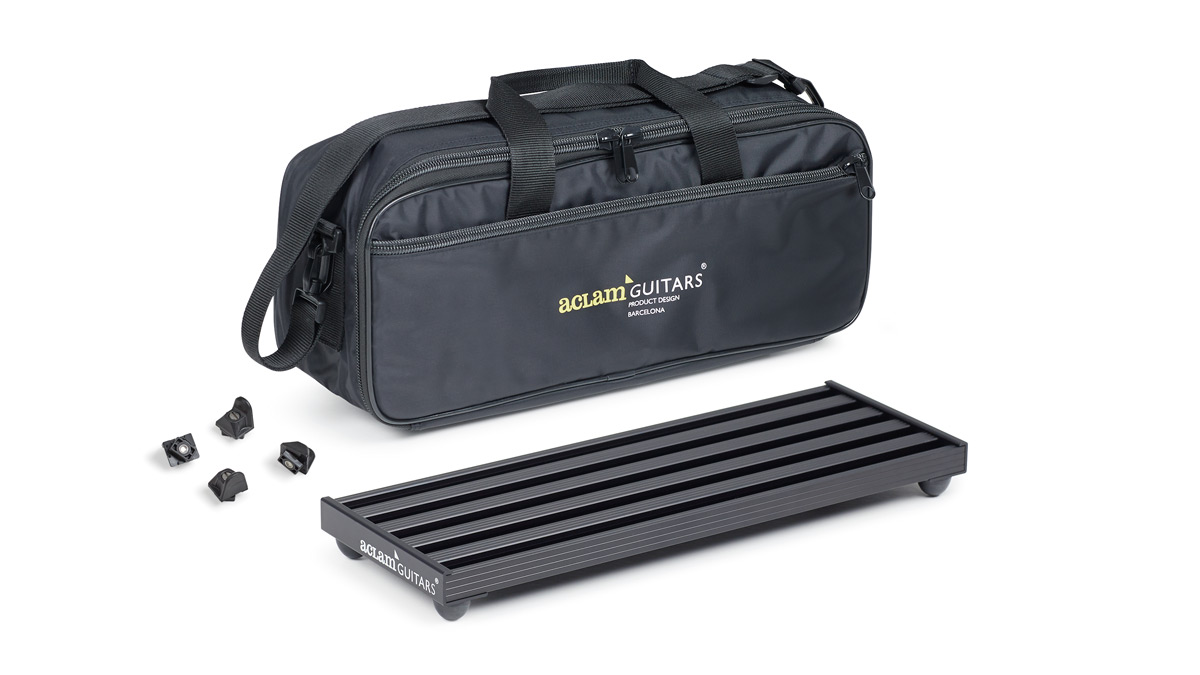
4. Aclam Smart Track S2
Our expert review:
Specifications
Reasons to buy
Reasons to avoid
Part of the latest trend toward modular, extendable pedalboard solutions, the Aclam boards have a number of interesting features. First is that you don't need to fix your pedals using Velcro. Instead, the Smart Track fasteners allow you to firmly fix pedals to the board without any adhesive.
Another cool feature is the ability to switch out the main bed of the board, which means you can substitute a smaller set of rails for a larger one if your collection grows. Like the Pedaltrain line, the Aclam comes with a softcase as standard for maximum portability.
Finally, in addition to the expected kits for attaching power supplies to the underside, there's the option of an extender kit for the board feet to increase the pitch of the board.
Best for touring
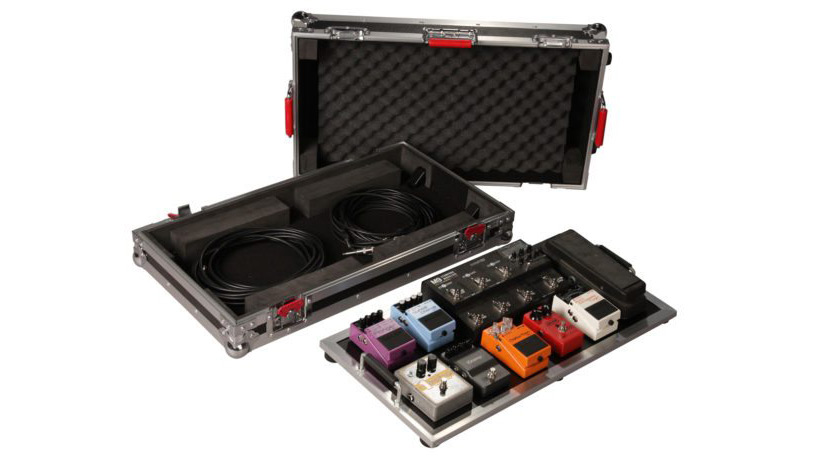
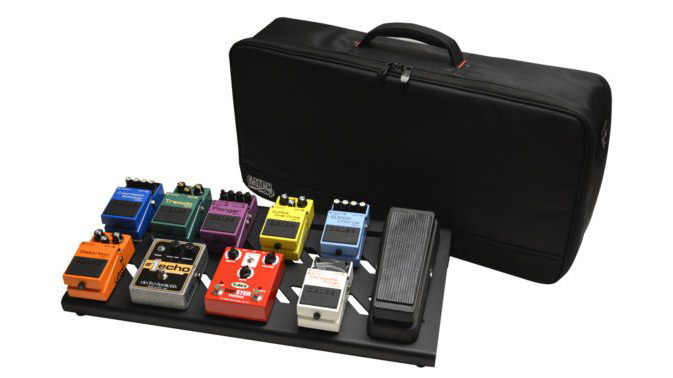

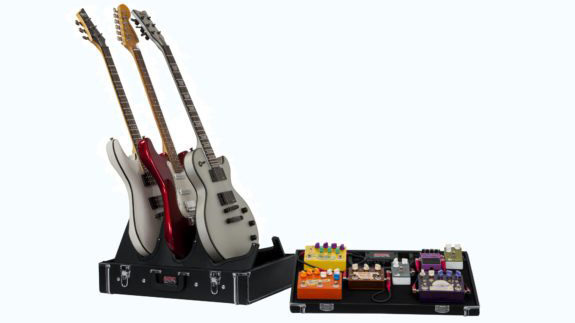
5. Gator G-Tour Large
Our expert review:
Specifications
Reasons to buy
Reasons to avoid
Gator offer an overwhelming array of options, from Pedaltrain-style boards which will take power and cable runs on the underside, to heavy-duty options where everything sits topside between large carry handles.
If you're a touring guitarist then this is the pedalboard for you, with plenty of size for a large amount of pedals. It's super durable too, providing the build quality that will give you plenty of protection against the rough and tumble of life on the road.
As well as soft-cases, there's flight case options for most of the range. There's some particularly wild board and case combinations at the more esoteric end of the range, too. For example, there's the Gigbox, which has integrated power and a case that can be used as a guitar stand for three guitars, and the Mega Bone, a single-row board with space for two wah-sized pedals at either end that curves around the user like the Holeyboard.
Best modular
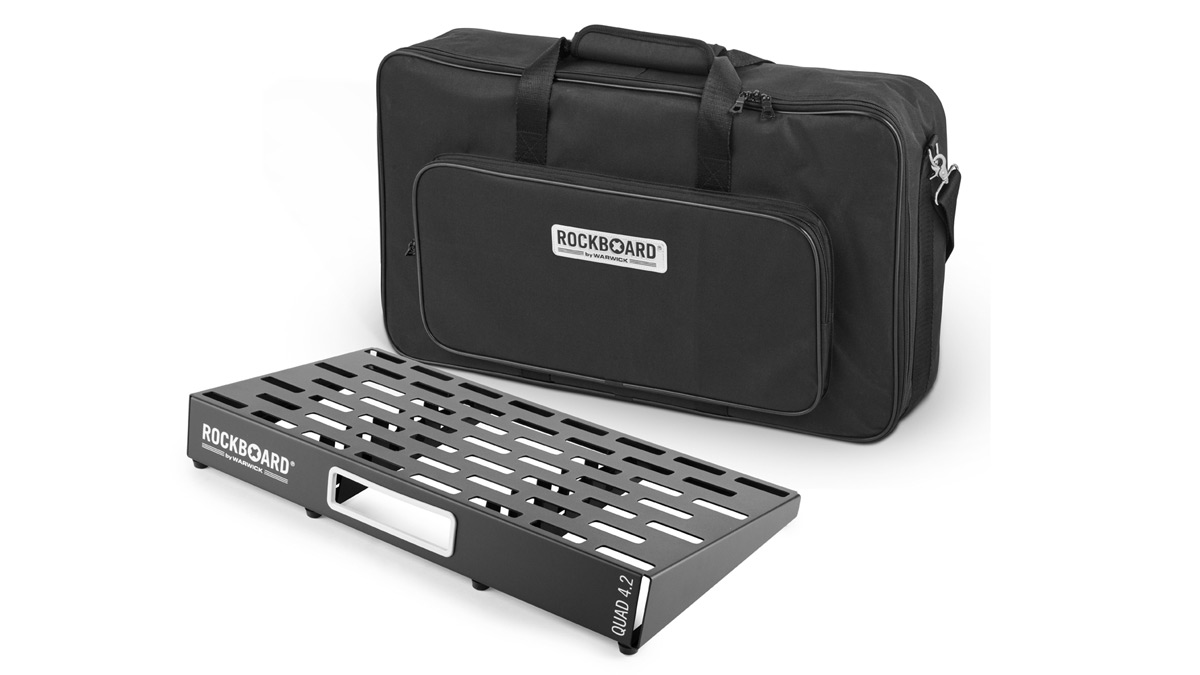



6. Warwick RockBoard TRES 3.1
Our expert review:
Specifications
Reasons to buy
Reasons to avoid
The Warwick Rockboard is another modular option that offers custom-level specs at non-custom prices. While it's still not cheap, you can easily put together something robust and tailored for your specific needs.
These 'boards feel rugged, but they're not that heavy thanks to the slimline single-folded, cold-rolled aluminium board. Despite being so thin, the support brackets underneath make it ultra-stable even when it's loaded with pedals.
Boards come as standard with a soft case, and then you can pick a patch bay to slot into the rear for I/O, power supply, and buffer options that work for you. There's also a variety of mounting accessories available for you to customise to your heart's content.
Read the full Warwick RockBoard review
More options...

7. Boss BCB-90X
Our expert review:
Specifications
Reasons to buy
Reasons to avoid
A fine first board, the Boss BCB also has a number of useful features like I/O connectors, send and return jacks, a power supply, and space at the top for miscellaneous odds and ends.
It's a decent feature set in a highly portable and robust package, but the main drawback is that the foam inserts to brace the pedals are modeled on the Boss form factor, meaning that if you want to have a different set of pedals than 4-6 Boss products, they might not fit so well.
To get around this we've seen many guitarists cut their own spaces into the foam, or just do away with it entirely. So don't be put off if you don't have loads of Boss stompboxes, this is still a great option for beginner players looking for a first pedalboard.


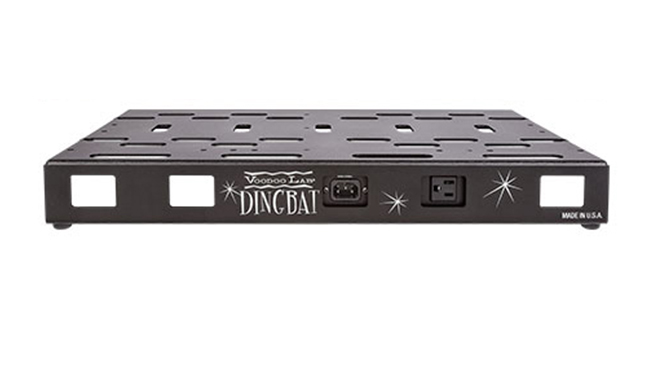
8. Voodoo Lab Dingbat Medium Pedalboard
Our expert review:
Specifications
Reasons to buy
Reasons to avoid
Voodoo Lab sure knows a thing or two about effects pedals and is the go-to pedalboard power supply company for many touring guitar players. Voodoo Lab has used its expertise in the field to produce a lightweight pedalboard solution that can incorporate its famous power supplies.
The Dingbat pedalboard comes in three different sizes, with the medium board able to house up to 10 pedals. However, this may vary depending on the size of pedals you use.
As well as a heavy-duty tour grade padded gig bag, this pedalboard also comes with the usual adhesive hook-and-loop tape and a variety of zip ties to ensure everything stays nice and tidy.




9. Temple Audio Duo 17
Our expert review:
Specifications
Reasons to buy
Reasons to avoid
Another 'board that doesn't force you to use velcro is the Temple Board. With gaps above pedals for cable runs and power supplies, pedals are fixed via zip tie or the company's proprietary Quick Release Pedal Mounts.
The 'boards themselves are modular, with a number of different end-panel options that range from plain to complex, with integrated I/O and power connectors.
They're stylish, but the layout of larger holes might be an issue on 'boards containing a large number of pedals with side-mount, rather than top-mount, jacks. This makes it a little less flexible than some of the others on this list.

10. D'Addario XPND pedalboard
Our expert review:
Specifications
Reasons to buy
Reasons to avoid
Okay, so imagine this scenario - you've just spent months getting the perfect board together, from choosing the pedals to arranging them into the most user-friendly order and filling up every inch of your new 'board. But wait, you've stumbled upon a new overdrive pedal that you just know will allow you to achieve tonal greatness, but you can't possibly remove one of the stompboxes already on your 'board.
Well, if you've found yourself in this tricky situation, the D'Addario XPND is the pedalboard for you. This telescopic pedalboard will grow with your pedal collection, meaning you don't need to buy a brand new pedalboard every time you get a new stomp.
This clever 'board also features a unique cable management system and comes with loop Velcro fitted straight out of the box. However, we have to mention that the pedalboard comes unassembled, so you need to put it together yourself.

11. Fender Professional Pedalboard
Our expert review:
Specifications
Reasons to buy
Reasons to avoid
Fender’s entrance into the world of pedalboards makes quite a statement with its eye-catching silver look and unique mounting system. The Fender Professional Pedalboard comes in three sizes to suit players of any sized pedal collection.
It’s a low-profile design with a machined, anodized aluminum construction which keeps things nice and lightweight. Despite the lack of heft, it retains significant structural rigidity so will easily put with the stresses of regular gigging and rehearsals.
Integrated routing channels make your cable management a doddle and Fender have handily included zip ties and cable clips to ensure everything is as tidy as can be. A dedicated mount fits a variety of pedalboard power supplies and it comes with a soft case for taking it to your next show.
FAQs

Are pedalboards worth it?
While it's true, you don't need a pedalboard to use guitar effects pedals, a good quality 'board certainly helps to keep them in order. These factory-produced pedalboards give you a surface in which you can attach a whole manner of delay, reverb or tremolo pedals, keeping them wired up and always ready to rock - drastically reducing set-up time.
This can make it easier to get straight into playing the guitar whenever inspiration strikes. Of course, nothing hinders creativity, quite like getting your pedals out, connecting the power supply, finding your patch cables, and hooking everything up, and by that time, that epic riff idea is gone.
Another added bonus is that, as the pedals are housed inside a case, unable to move during transit, it reduces the risk of damage on the way to a gig or practice session.
How much does a pedalboard cost?
A good quality pedalboard doesn't have to cost a fortune, with many low-cost options coming in well under the $/£100 mark. That said, we believe it's all relevant. If you have a minimal set-up - say, a tuner, drive pedal and a delay - then you don't need a fancy 'board. A basic unit such as the Pedaltrain Nano would undoubtedly do the job.
On the other hand, if your current rig looks more like the bridge of the Starship Enterprise - with more high-end boutique pedals than you can shake a Vulcan at - then you may want to invest in something more substantial.
What size of pedalboard do I need?
Size is the most crucial factor to consider when picking out a pedalboard. Not only does your new board have to fit your existing pedals, but we recommend giving yourself room to expand. You will most likely purchase more pedals in the future, and you don't want to buy a new pedalboard each time.
Also, don't forget about your power supply. The power unit needs to go somewhere, and whether that's underneath or on top next to your pedals, remember to account for the space it will take up.
What style of carry case is best?
When deciding on what type of case to choose, think about the application of the pedalboard. The over-the-shoulder carry bag is ideal for general pub gigs and travelling to and from the practice studio. The lighter weight means they are a breeze to carry around, and the smaller form means they fit easily in most vehicles.
Most of the common big-name brands will also have an option for a hard flight case, these are perfect for longer tours or overseas travel. Bear in mind that this will mean the pedalboard will be significantly heavier and take up more room.
How we test

When testing a pedalboard for review we take the view that we should approach it as if we bought the pedalboard ourselves. That means unwrapping it excitedly and loading it with pedals immediately, and of course making sure to take some notes as we do.
There are certain things we'll be looking for during our testing process, and firmly in our minds will be how that particular 'board compares to others we've used. This overview allows us to be impartial with our testing, but still have our findings backed up by years of actual experience using pedalboards at live shows.
When we first get our hands on a new pedalboard for testing, we'll start by looking at how easy it is to put together. Some 'boards require a little construction, others are just a single unit but it's important to note how easy it is to put together if required.
We'll then look at the overall build quality of the board. Whether that's the weld joins at the corners, the application of hook and loop, as well as any additional screws or metal parts that are used in the construction. We're looking for a nice finish without any imperfections, cross-threaded screws, or messy welding.
One of the most important aspects of any pedalboard is mounting a power supply, so we'll next look at this. Typically mounting one of our pedal power supplies, we'll note down how easy the installation is, whether the fit is good, and if possible, how different-sized supplies fare. We'll look into whether it comes with a specific bracket or if you need to buy one yourself, as well as if there's any elastic banding included to help keep it in place.
Once the power supply is in place it's time to start adding pedals. We'll cram it as full as we possibly can, and wire up the pedals just as we would on our own 'boards. Here we're looking at the mounting options, whether its velcro or some kind of modular system, and how easy they are to place the pedals to your liking.
We'll also note the cable management aspects of the pedalboard, another crucial factor in how usable it is. We're looking to see that cables can be easily hidden away underneath the unit, that both top and side-mount jacks are usable with is particular format, and again if there are any added accessories that make cable management easier.
Once we've gotten the 'board fully built, we'll then test it out, if possible taking it to a rehearsal space to see how well it travels. If a case is included then we'll make sure to use it and see how it holds up to being moved around from the car to the rehearsal room, as well as how comfortable it is to carry should you need to use public transport.
We'll try and spend at least a couple of weeks with any gear we review to really get to know it, and our writers will use it for their daily music tasks as if it were part of their own gear. Doing a review this away allows us to test it as any guitarist would, giving us a great perspective to inform our readers how well it's going to perform for them.
Find out more about how we test music gear and services at MusicRadar.
Related buyer's guides
MusicRadar's got your back
- Find your perfect tone with the best multi-effects pedals
- Get pedal loopy with the best looper pedals
- Add one of the best guitar tuners to your board
- It's drive time! The best overdrive pedals
- Crank it with the best distortion pedals for guitarists
- Get fuzzy with the best fuzz pedals
- Check out our ultimate guide to the best cheap electric guitars
Want all the hottest music and gear news, reviews, deals, features and more, direct to your inbox? Sign up here.
Alex Lynham is a gear obsessive who's been collecting and building modern and vintage equipment since he got his first Saturday job. Besides reviewing countless pedals for Total Guitar, he's written guides on how to build your first pedal, how to build a tube amp from a kit, and briefly went viral when he released a glitch delay pedal, the Atom Smasher.
- Matt McCrackenJunior Deals Writer
- Daryl RobertsonSenior Deals Writer
